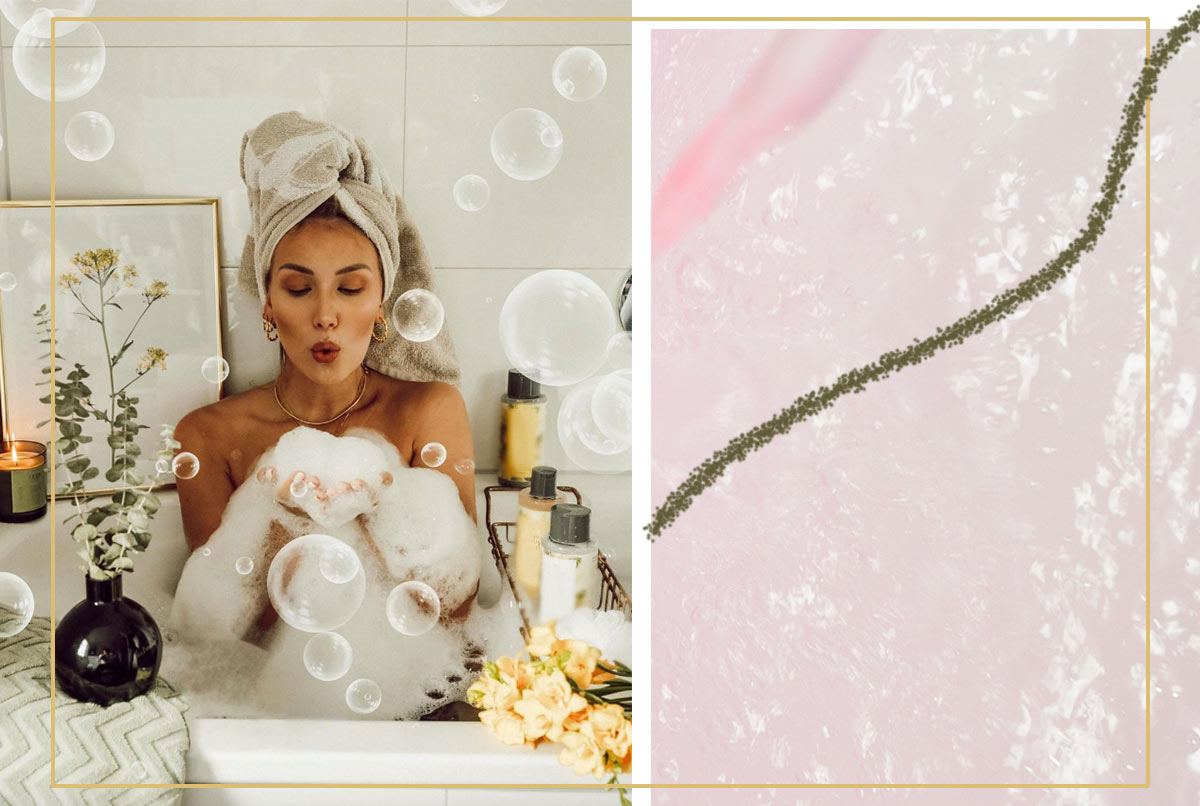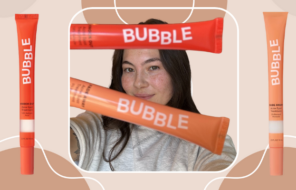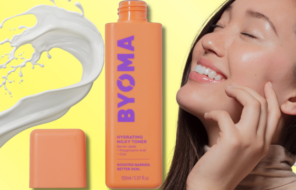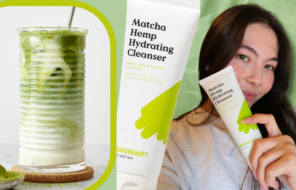You may be reading the title of this article and thinking, “what’s so complicated about taking a bubble bath?” and the honest answer is nothing! But we’re going to discuss some things you may not know about the practice and how you can create a relaxing, luxurious experience at home without much effort at all!
In this article:
- What Is Bubble Bath and How Are Bubbles Formed?
- Bubble Bath Benefits
- Bubble Bath vs. Bubble Foam vs. Bath Bomb
- DIY Bubble Bath Recipes
- How to Take the Perfect Bubble Bath
What Is Bubble Bath and How Are Bubbles Formed?
Also known as bath foam or foaming bath, a proper bubble bath is a bathtub with a thick layer of surfactant foam on the top. Surfactants are compounds that reduce the surface tension between two liquids, a gas and a liquid, or between a liquid and a solid. When the surface tension of the water is stretched, you end up with a soap molecule surrounding a water molecule, allowing it to create the shape of the bubble.
When referring to a bubble bath, it’s typically a product made specifically for a bath. Bubble bath products contain surfactants that make them able to produce the big, luscious bubbles that we associate with a bubble bath. Some common examples of surfactants that you may see on the ingredients of your bubble bath or other products are sodium stearate and sodium lauryl ether sulfate.
How are bubbles formed? Bubbles can be created in several ways. When you add a foaming agent such as a bubble bath to flowing water, it forms bubbles via aeration caused by agitation in the water. This usually happens just by adding a bubble bath to running water, or there’s also mechanical aeration, such as jets found in some bathtubs or hot tubs.
Bubble Bath Benefits
Some people live for a bubble bath, while others prefer showers. If you’re a fan of a bubble bath, you may be surprised to learn there are a variety of benefits to taking one, even if you aren’t usually a fan of them.
- Relaxation: Putting yourself in a horizontal position while lying in a hot, soothing bath can put you in a better mood after a stressful day. A bath can promote quiet time, away from others and away from ever-present screens.
- Muscle Recovery: There’s a reason why so many athletes take Epsom salt baths. Epsom salts mixed into a hot bath can reduce inflammation from a variety of sources. If you’re dealing with joint or muscle pain, adding an Epsom salt to your evening bubble bath can help relax your sore muscles.
- Soothe Skin Irritation: If you suffer from a skin condition such as eczema, contact dermatitis, or psoriasis, you could benefit from bubble baths – as long as you use products for your skin condition. A popular option for skin irritations is an oatmeal bath, using homemade or store-bought colloidal oatmeal. Adding baking soda to your bath can also reduce irritation and redness.
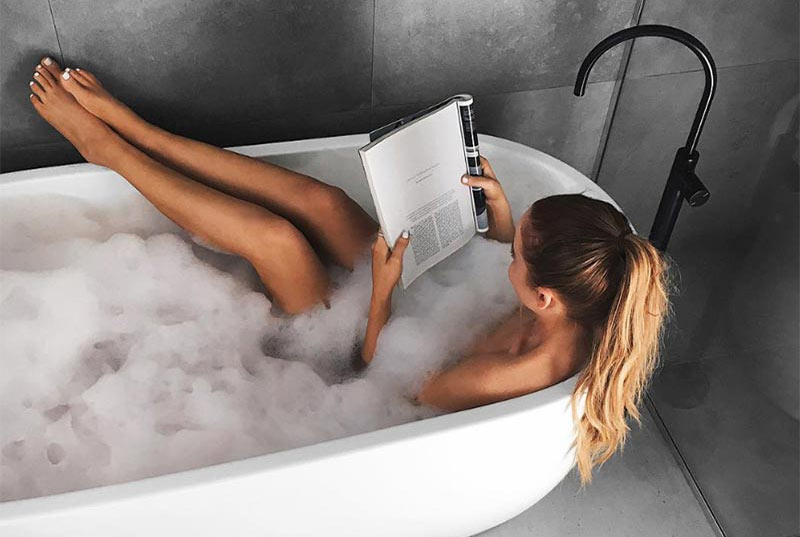
Bubble Bath vs. Bubble Foam vs. Bath Bomb
When comparing products marketed as bubble “foam” and bubble “bath,” there is no real difference in the experience they create for your bath time. A bubble bath typically results in a thicker layer of bubbles and is usually more heavily concentrated. Bubble foam also creates bubbles, though they may not be as dense as the ones created using a bubble bath.
A bath bomb, on the other hand, is more of a short-lived novelty product. We covered the best bath bombs in another article, as well as their benefits, uses, and some homemade bath bomb recipes. Bath bombs are a fun addition to your routine, but they will not create lasting bubbles. They will, however, foam and fizz and add gorgeous colors and fragrances to your baths.
DIY Bubble Bath Recipes
If you want to avoid the chemicals and fragrances found in store-bought bubble baths, making your own at home is a great option. Making your own homemade bubble bath can also be a great DIY project for kids to teach them the science behind bubbles. Keep reading for tips and tricks on how to make bubble bath at home!
Basic Bubble Bath Recipe
For most at-home bubble bath recipes, you need a base of some true soap. For this base, we recommend:
- Equal parts water and Castile soap (such as Dr. Bronner’s)
- 3 oz. of either glycerin or coconut oil (these are moisturizing ingredients and both lather up well)
- Essential oils of choice
- 1/2 tablespoon of sugar
- A sturdy, non-glass container to store your bubble bath
These ingredients aren’t perishable, so the base of this recipe will keep for quite some time.
This base is the simplest to assemble. For this DIY bubble bath, all you have to do is mix the water, soap, and glycerin or coconut oil well. Then you can add your choice of essential oils based on your preferences. Shake well, and when you’re ready to soak, pour a few ounces into the water as your tub is filling.
Recipe Variations
Switching up your recipe with this bubble bath base is super easy, and you can even make smaller batches with multiple versions! Add the ingredients from the recipes below to the base above to customize your bubble bath.
You can also play with essential oils for different scents, always giving your preference to skin-safe options, like lavender oil, chamomile oil, or camellia oil to soothe, hydrate, and relax at the same time. For an extra skin-nourishing recipe, you can add a few drops of other oils, like almond oil, argan oil, jojoba oil, or vitamin E oil.
Other great ingredients for a homemade bubble bath are honey, known for its sweet aroma and anti-inflammatory properties, aloe vera that acts like an excellent skin-soother, soothing and antioxidant coconut oil, etc.
Dried flower petals will not only make your soak more beautiful and fragrant, but also some dried flowers and herbs have health benefits, such as hibiscus, jasmine, rose, calendula, or lavender.
Note: For homemade bubble baths that include honey or other perishable items, try to use them within 1-2 months for best results.

Calming Bubble Bath
- 10-15 drops of lavender essential oil
- Lavender food coloring (optional)
- 10-15 drops of chamomile essential oil
Nourishing Bubble Bath
- 1 tablespoon of honey
- 1 tablespoon of light almond oil
- 1-3 teaspoons of pure vanilla extract
- 1 tablespoon of vitamin E oil
Cool and Refreshing (Great for the Sniffles)
- 5-10 drops of eucalyptus essential oil
- 5-10 drops of peppermint essential oil
- 5 drops of lavender essential oil
- 1/2-1 cup of Epsom salt (to soothe those tired muscles)
For Sensitive Skin
You may want to use a sensitive skin body wash or soap as your base for this recipe.
- 2 tablespoons of aloe vera gel
- 1 teaspoon of vitamin E oil
- 1 tablespoon of raw honey
- 10 drops of chamomile essential oil
- 10 drops of lavender essential oil
DIY Bubble Bath FAQ
If you don’t like Castile soap or find that it doesn’t bubble enough for you, you can also use a body wash or shampoo of your choice as your base. These products tend to all have similar ingredients, and they also lower the surface tension of the water so that bubbles can form.
Yes! Most food coloring or chemical-free food dyes won’t stain your tub, so they’re perfectly safe to add to your homemade bubble bath.
How to Take the Perfect Bubble Bath
The idea of the perfect bubble bath may be utterly dependent on the person taking a bath. But we’ve gathered some ideas that will help you create a calming environment so you can get the most of your bath.
- Choose Your Bubble Bath
The first thing you need to do is get your bubble bath. We covered the best bubble baths here.
- Set the Mood
I know I’m a candle person, and bubble baths are usually associated with candles. If you have a few you like, place them around your bathroom to create a soft glow. Be sure there’s enough light that you can see what you’re doing, though!
- Don’t Overheat
Even though I’m a massive fan of scalding hot showers, be sure that your bath isn’t TOO hot. Water that’s too hot can cause more irritation if you’re already dealing with sensitive skin.
- Add Your Bubble Bath
Make sure to pour your bubble bath under the running water to foam up perfectly.
- Atmosphere
If your goal is to relax, you can choose an instrumental album you like or your favorite artist. If you need a quiet place to cry, a playlist of ballads may be just the ticket. Some people bring a book with them to the bath, be careful not to drop it!
- Stay Hydrated
Soaking in hot water can be dehydrating, so it’s best to keep a glass of water nearby, especially if you indulge in a glass of wine or other alcohol with your bath.
- Fun Additions
Some additional products can make your bath time even more luxurious. Some great additions include a pillow for your head, a loofa, or bath mitts paired with your bubble bath or an exfoliating scrub.
- Post Bath
When your bath turns tepid, it’s time to get out. If you’re still soapy, rinse off and wrap yourself in your favorite towel or bathrobe (bathrobes are not just for women, either. Anyone can enjoy a luxurious, comfortable robe!)
- Moisturize
You’ve just taken a well-deserved soak, but sitting in hot water can be dehydrating, as we talked about. Grab your favorite moisturizer, body oil, or body butter and layer it on (especially in the winter!).

Other Bubble Bath FAQ
This is totally up to personal preference and may depend heavily on how long the water stays hot. As mentioned above, starting with comfortably hot bath water may seem like a good idea to make it last longer, but you don’t want to burn your skin.
Again, this depends a lot on personal preference. As long as you’re correctly rinsing, cleansing, and moisturizing afterward, there’s no reason you can’t take a bath as often as you want!
Photos via @anajohnson, Instagram

